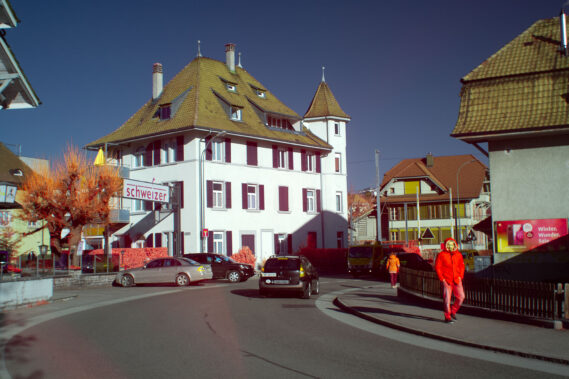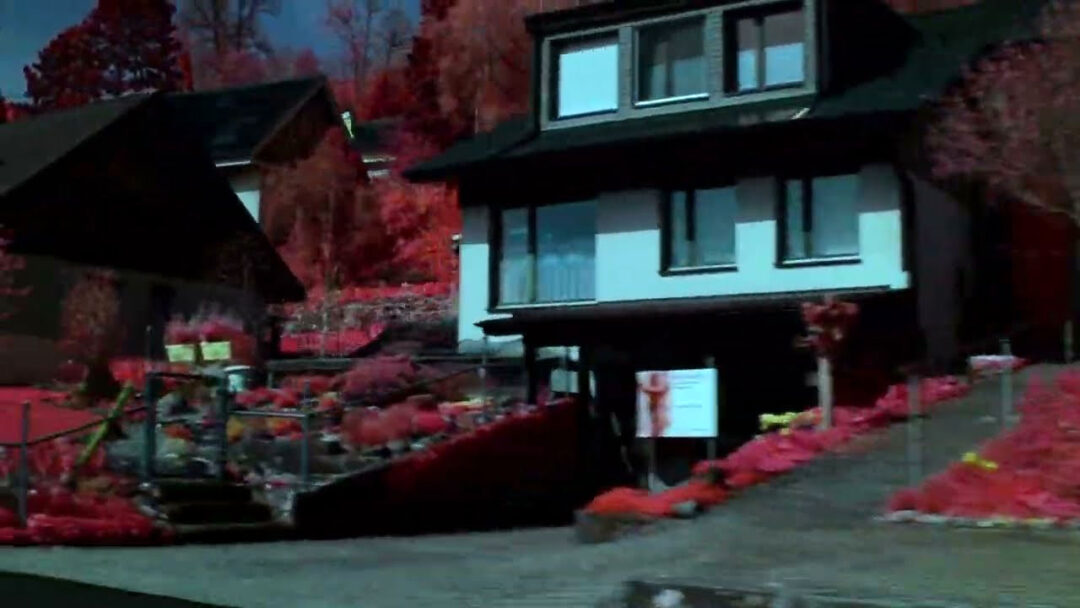I think I have found a very good way to emulate the look of Kodak Ektachrome Infrared or Aerochrome with digital cameras.
If I were only concerned with red/magenta vegetation, then I would have sticked to the variants with the Foveon sensor (Sigma SD1 for example), especially with red filter or without filter. But it seems almost impossible to get the “Aerochrome-specific” color changes (especially IR-reflecting red to yellow, non-IR-reflecting green to blue) with this sensor. These color shifts are documented well in this paper.
In the end it is a matter of taste, but the most common digital Aerochrome methods don’t produce the images I want or require a lot of work.
– Foveon Full spectrum without filter or with filters: No “Aerochrome-specific” color shifts, problems with setting white balance, inconsistent results and quite a bit of post-processing.
– IR Chrome: No color shifts, no dark blue skies, rather orange and rather uniform vegetation.
– 550nm filter: Unnatural, quite uniform and pale colors and unnatural general look, too much post-processing needed.
So I tried to use my experience with SD1 and Foveon methods with already known methods for Bayer cameras, especially the single-image method that was first publicised (to my knowledge) by JW Wong.
So I came to a fine solution with combination of a Hoya X1 (green) and a Tiffen 16 (orange) filter. I have described the process in detail here.
But why does this digital Aerochrome method work so well? Since I’m not a technophile, I can suspect rather than really provide answers.
The green filter allows deep blue to deep red light to pass (i.e., approximately 450nm to 650nm), but crucially, the orange filter shifts the cutoff in the lower range, to approximately 520nm, thus blocking out the blue light. It allows all light above 520nm to pass, including near-infrared. In the upper range, however, the green filter restricts the transmission of light. In particular, the 77mm diameter version of the X1 filter excludes (to a large extent) near-infrared in the range of about 650-750nm, i.e. large parts of the red spectrum (as you can see in this paper on page 5). From 750nm, the transmission increases again and allows infrared light from about 750 to 1000nm to pass through.
This is what the individual color channels of my photos look like. From left to right: red, green and blue.

As you can see, the trees in the red and green channels are very dark, which means that there is hardly any IR light imaged there, while the blue channel contains a lot of (or only?) IR light and therefore the vegetation is very bright.
The photos from the camera are now processed so that the blue channel serves as the red/IR channel, while the red replaces the green and the green replaces the blue, just like with the Aerochrome film. The process is very simple and straightforward.



